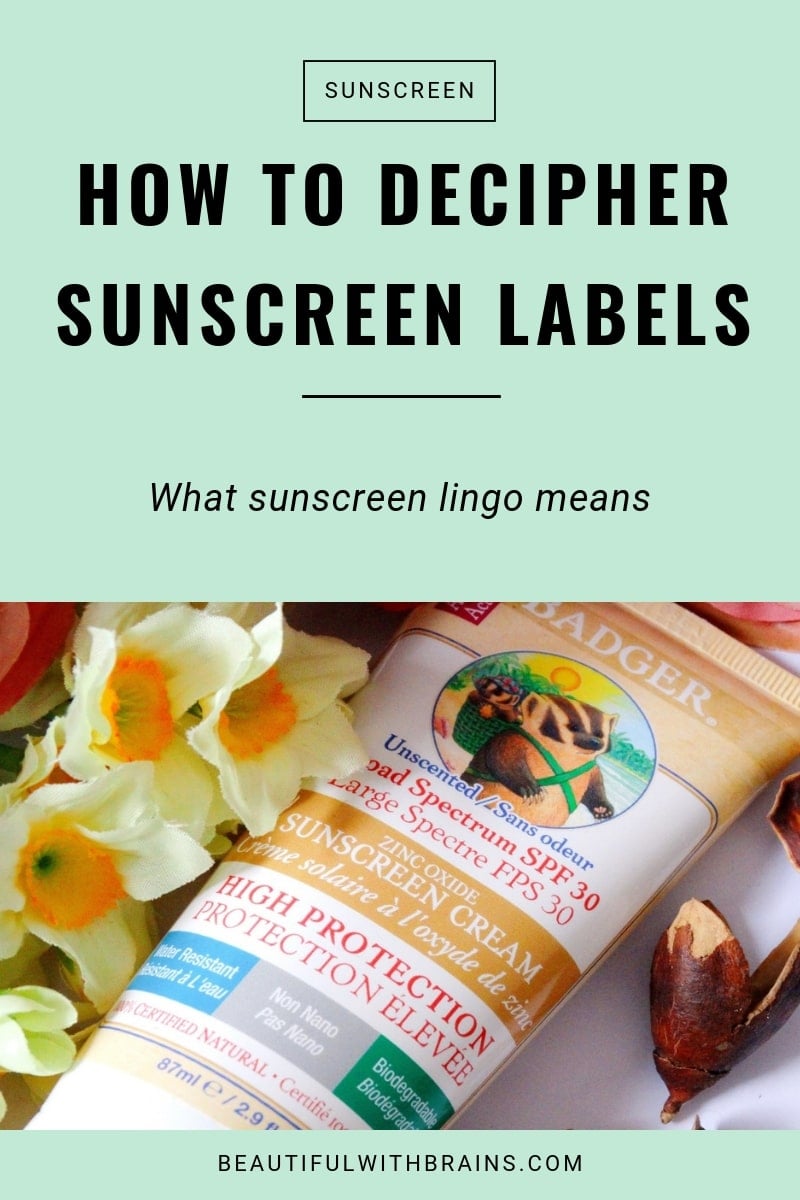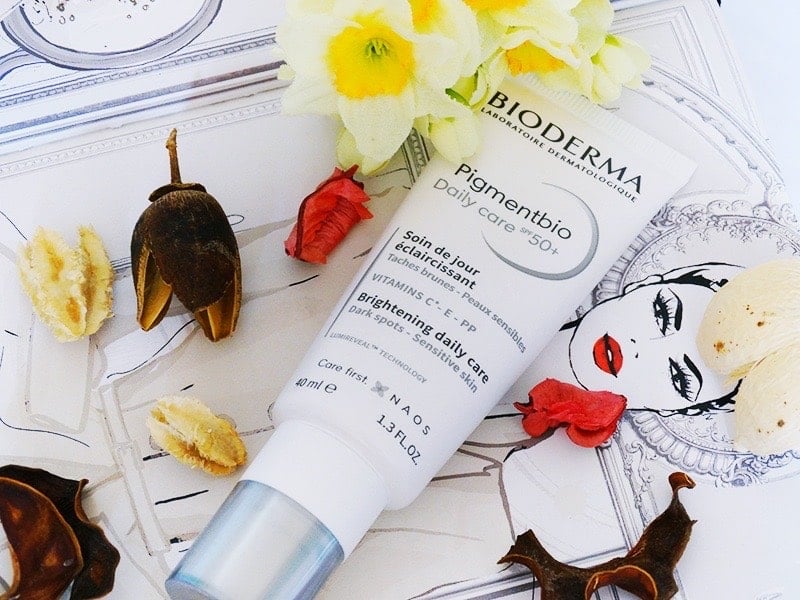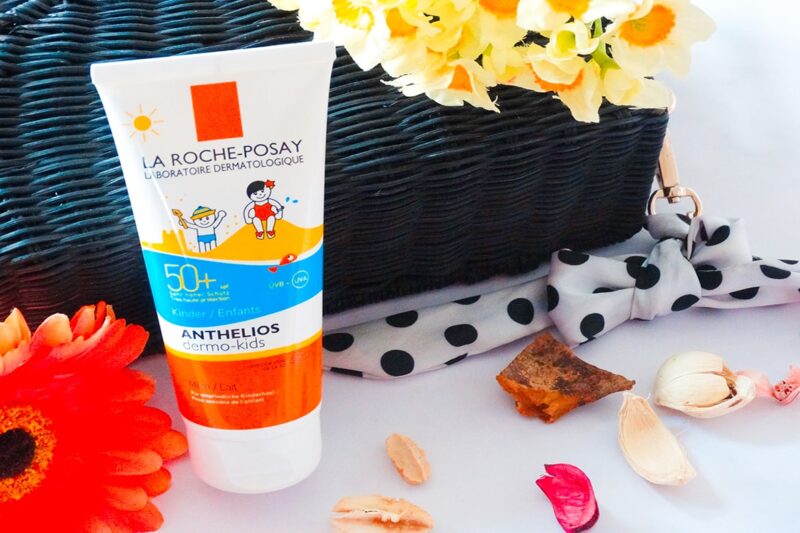
Can you decipher sunscreen labels?
I mean, what does “broad-spectrum” really mean? Does your sunscreen need to be water-resistant, too? And why the heck are there stars on the bottle?
The law states brands need to give you all the info to help you make an informed choice (and I’m totally on board with that). But why can’t they write it in plain English?!
Worry not, my smart friend. I’m here to decipher sunscreen lingo for you:
Broad spectrum
A sunscreen that protects against the entire UVA and UVB spectrum. You’d think this is a given, but so many sunscreens don’t do it.
Here’s how to know if a sunscreen provides “broad-spectrum” protection:
- “Broad spectrum”: Most Western sunscreens use this term to let you know they provide protection from both UVA and UVB rays.
- Plus sign: Asian sunscreens use the PA system. The more + signs next to the PA letters, the more protection from UVA rays the sunscreen provides.
- UVA filters: You can always check the ingredient list to make sure it contains an UVA filter. They are zinc oxide, titanium dioxide, avobenzone, mexoryl, and tinosorb.
If you don’t see any signs of UVA protection, run away!
Related: What’s The Difference Between UVA And UVB Rays?
How effective is your sunscreen? Sign up to the newsletter below to receive the “Sunscreen Audit” Worksheet and find out if your sunscreen is really up to the job:
Chemical Sunscreen
Technically, ALL sunscreens are chemical. That’s because everything made of matter is a chemical. Water is a chemical (H2O). Plants are made of chemicals. Heck, even your body is made of chemicals.
Unfortunately, the skincare community has missed the memo. People call “chemical sunscreens” those sunscreens that use synthetic UV filters, such as avobenzone, oxybenzone and mexoryl.
They work by absorbing UV light and transforming it into a less damaging form of energy (heat).
Related: Chemical VS Mineral Sunscreen: Which One Is Right For You?
Mineral Sunscreen
Also called “physical sunscreens”, these sunscreen use two white mineral UV filters, titanium dioxide and/or zinc oxide, two white minerals.
They work like chemical sunscreens, but they’re gentler on the skin. Even babies can use them. They catch? They often leave a white, greasy cast on the skin.
Related: Why Zinc Oxide Is My Fave UV Filter

PA
PA stands for Protection Grade of UVA rays. It’s a rating system created in Japan to indicate the level of protection from UVA rays. The more plus signs next to PA, the higher the protection (the maximum is 3 +++).
Related: Everything You Need To Know About The PA System In Sunscreens
Plus Sign
When the plus sign follows the SPF number, it means “more than”. For examples, Australian regulations state that a sunscreen labelled 50+ must “provide at least SPF60 in testing”.
Related: Does A Higher SPF Provide Better Sun Protection?
SPF
SPF is short for sun protection factor. It applies only to UVB rays and simply determines the amount of time you can stay in the sun without getting a sunburn. It’s calculated by measuring the burn rate on unprotected skin. The higher the SPF, the better protection you get.
Related: How To Treat A Sunburn

UVA Rays
UVA rays emit long wave ultraviolet radiation. They’re the reason you need to wear sunscreen every day (even in winter). They’re present every day, from the moment the sun comes up to when it goes down, and can penetrate through windows and clouds. UVA rays cause premature aging and increase the risk of developing skin cancer.
UVB Rays
UVB rays emit medium wave ultraviolet radiation. They’re stronger between 10 a.m and 4 p.m., and, unlike UV rays, can’t pass through clouds or windows. But that doesn’t mean they’re less dangerous! UVB rays are responsible for sunburns and skin cancer.
Related: A Tan Isn’t Worth Dying For
Star Rating
According to the British Association of Dermatologists, “the stars range from 0 to 5 and indicate the percentage of UVA radiation absorbed by the sunscreen in comparison to UVB, the ratio between the level of protection afforded by the UVA protection and the UVB protection.
“Be aware that if you choose a low SPF it may still have a high level of stars, not because it is providing lots of UVA protection, but because the ratio between the UVA and UVB protection is about the same.”

Sunblock
An old, outdated name for mineral sunscreens. The term has been recently banned by the FDA because it could lead consumers to believe it would block out ALL UV rays, but no product can do that.
A very small amount of UV rays (usually between 1 and 5%) always bypasses sunscreen and reaches skin anyway. Again, the higher the SPF, the more rays you’ll block.
Sunscreen
A product formulated to protect skin from ultraviolet radiation and the damage it causes. Wear it every day!
Related: 6 Things To Look For In A Sunscreen
Water-Resistant
A sunscreen that retains its effectiveness in preventing sunburns (but not premature aging) after swimming or sweating for a certain amount of time (either 40 or 80 minutes).
It replaced waterproof, a term banned by the FDA because it makes you think it retains all its sun protection properties even after swimming, which is obviously not the case.
Do you know any other sunscreen terms that I haven’t mentioned in this post? Share it in the comments, and I’ll add it to the list.


I’ll always prefer physical sunscreens to chemical. My skin has made that decision for me. 🙂
Trisha, I much prefer them too. They’re less likely to irritate skin and provide great protection.
I’m horrible…I always forget sunblock when I go out. When I do use it, I love the aerosol sprays because they do a good job of keeping you feeling refreshed too
Hunni, try keeping the sunblock in a place where you can always see it before going out. That’s how I got into the habit of wearing it. It’s easier to forget about it if it is stashed somewhere you can’t see it.
I use a sunscreen with Avobenzone in it from LRP Anthelios Sx line. I’m concerned that my makeup is deactivating the Avobenzone in my sunscreen because I heard that Titanium or Zinc ingredients in makeup can destabilize it. Is this true? And do you know of any makeup brands that do not contain these ingredients??
Kimberley, it is true that uncoated Titanium and Zinc ingredients can affect the stability of avobenzone, although how much would depend on the product. To fix this, you have several options. You can keep using your avobenzone sunscreen, but reapply it more often. You can use makeup products with coated Titanium and Zinc ingredients that don’t degrade avobenzone. Or you can switch to a physical sunscreen. Hope this helps.
How do I know if my makeup is coated or not? I use Makeup Forever Multi Use Powder. It has titanium dioxide, but it has mica and silica.
Kimberley, when it is, it is usually written on the packaging, although not all companies follow this rule. I always assume it isn’t coated, unless otherwise stated.